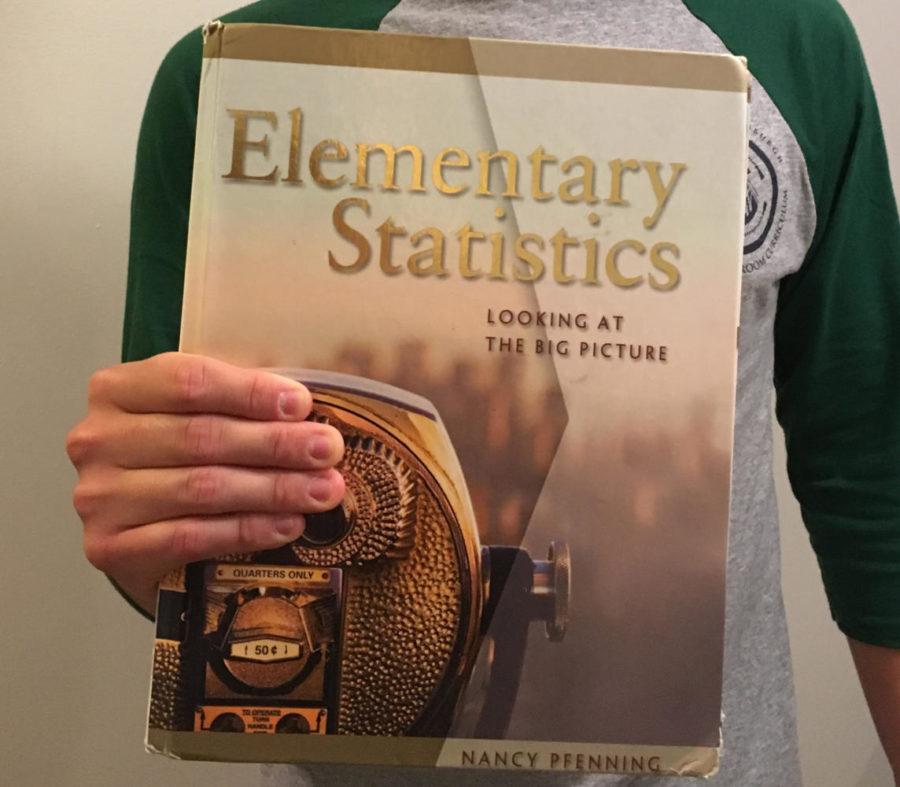Few students enjoy buying textbooks for their classes, but Olivia Raymond was eager to purchase her elementary statistics textbook last spring knowing its author would also be her professor.
“I was happy because I figured that the class would closely follow the book, so the book would be more relevant and helpful during the semester than a book that wasn’t written by Dr. [Nancy] Pfenning,” the senior actuarial math major said.
Scores of professors at Pitt have their own published works, lining bookshelves with poetry collections, memoirs, novels, textbooks and more. Sometimes these professors bring these works into the classroom, whether through reading assignments or homework problems.
Nancy Pfenning is a senior lecturer in statistics at Pitt, teaching several introductory classes each semester. Although she began teaching statistics in the 1980s, she has used her own book — “Elementary Statistics: Looking at the Big Picture” — in her classes since 2010.
Pfenning says the books she used to teach focused too much on specific calculations and failed to provide students with an overarching view of the subject.
“I began to see some major shortcomings in all of those books,” Pfenning said. “Since I wasn’t able to find a book that gave students a truly global perspective of introductory statistics, I decided to write it myself.”
This approach allows for consistent language and notation between lectures and textbook assignments, Pfenning said. Her students, including Raymond, appreciate the consistency.
“The homework problems she had written in the book were similar to questions we had in lecture, both in their phrasing and the material covered,” Raymond said. “Because of this, I knew her expectations for our answers to the homework questions.”
Other professors have found ways to reach students with their works while still providing a range of other course materials.
Scott Morgenstern doesn’t require his students to buy his books, but he incorporates small sections of several of them into his graduate political science classes at Pitt, with the hope that they engage the students’ interests.
“We don’t tend to focus too much on them, but I do hope that they serve to push the discussions forward,” Morgenstern said.
One potential negative of a professor teaching their own book is that students might be less willing to critique the author. Though reluctant at first, Morgenstern said, students come around.
“After a bit of encouragement, there are frequently good criticisms,” he said.
Another professor-authored text that makes its way into classrooms is “Ways of Reading: An Anthology for Writers,” which is frequently assigned for Pitt’s first-year Seminar in Composition course.
Professors David Bartholomae and Anthony Petrosky wrote the textbook by compiling teaching materials of early Seminar in Composition professors from the late 1970s and early 1980s, when the course was first established.
Bartholomae does not assign this book to his own classes, but other Seminar in Composition professors include it in their course curriculum. With eleven editions of “Ways of Reading” under his belt, Bartholomae continues to test new materials in his classrooms before turning them over to the book’s editors.
“In this sense, we were always drawing upon our students,” Bartholomae said. “Not to help determine what to cut or to change, but to be our first readers and our first audience for possible new additions.”
Though roomfuls of Pitt students purchase these textbooks each semester, their authors do not receive royalties when the book is sold through Pitt’s book center.
On Pitt’s textbook order form, professors must specify whether any books they are assigning are authored by a Pitt faculty member. University policy says it’s a conflict of interest for a Pitt instructor to receive royalty payments on a text they assign, so this money must go elsewhere.
In Bartholomae and Petrosky’s case, it was returned to the department.
“From the very beginning … [we] returned our Pitt royalties to Pitt’s English department to provide support to the first-year composition course … including [to] the teaching assistants and non-tenure track faculty who were teaching it,” Bartholomae said.
Whether professors assign their works as a course’s main textbook or as supplemental material, the experience offers new perspectives to both professors and students.
Morgenstern and Pfenning both are open to students consulting other works alongside their own; however, the professors say the general reception from their students seems positive.
“I teach from my own textbook because that’s what I wrote it for, and I believe it does the job as intended,” Pfenning said.



